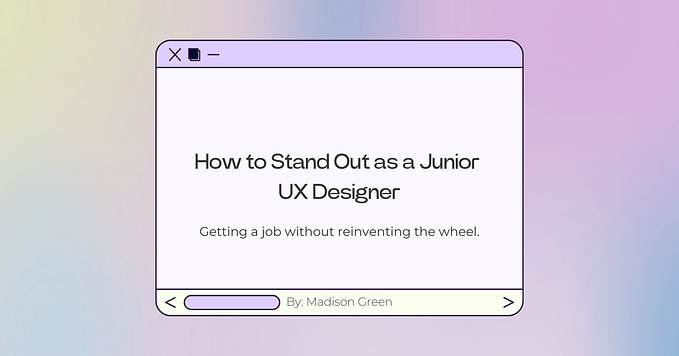Member-only story
What’s the difference between UX and UI design?
What they are, how they’re different, and how they’re the same.
I hear it all the time– from people inside and outside of the tech industry. Coworkers and clients often interchange UI (user interface) and UX (user experience) as easily as one might switch out street and road. But unlike the words street and road, which are accurately swappable, the UI and UX relationship is more like that of the square and rectangle– UX is the rectangle and UI is the square. Allow me to explain….
Squares and rectangles both fall under the geometrical definition of a quadrilateral, meaning they are shapes that have four straight sides. Rectangles are defined further as having four right angles. And a square is defined even further as having four right angles and four sides of equal length. Therefore, all squares are rectangles, but not all rectangles are squares. This is true of UX and UI. All UI is UX, but not all UX is UI. Let’s take a deeper dive into each of these practices to gain a better understanding.
UX (User Experience)
“User experience” encompasses all aspects of the end-user’s interaction with the company, its services, and its products.
— Don Norman and Jakob Nielsen
Don Norman, the guy who literally wrote the book on UX, first used User Experience as a self-chosen title for himself at Apple back in 1993. Since then a lot has changed regarding UX titles, but nothing has changed about the meaning of user experience.
In the tech world when we think about products, we’re usually thinking about a website or an app, but the term user experience stretches way beyond the digital realm. Think of frustrations you’ve had in the past with thermostats in your home or complicated microwave settings. Or, how about feelings of delight you’ve experienced when opening-up a new phone, carefully removing the beautiful packaging, turning on the device, and discovering that it’s all ready to work…






